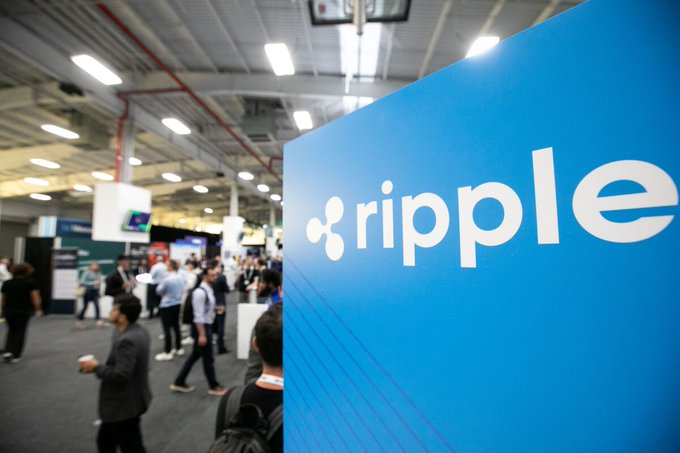Why Ripple Spent $1.25 Billion to Acquire Hidden Road
On April 8, 2025, blockchain payments giant Ripple announced that it had completed the acquisition of institutional brokerage firm Hidden Road for $1.25 billion, using a combination of cash, XRP tokens, and stock. This transaction is not only one of the largest M&A deals in the crypto industry this year, but also reveals a deep trend of traditional finance and blockchain integration—competing for institutional client resources through compliant infrastructure.

Strategic Objective: From Payments to Full-Stack Financial Infrastructure
Since its founding in 2012, Ripple has focused on cross-border payments and interbank settlements. Its XRP Ledger (XRPL) and On-Demand Liquidity (ODL) solutions have served over 300 financial institutions including JPMorgan Chase and Santander. However, following the conclusion of the SEC litigation in 2024 and the clarification of regulatory frameworks, the limitations of relying solely on the payments sector have become apparent.
The addition of Hidden Road fills a critical gap in the Ripple ecosystem. Founded in 2021, Hidden Road is an institutional brokerage platform with an annual clearing volume of US$3 trillion. Its clientele includes hedge funds, multinational corporations, and family offices, and it provides one-stop trading and clearing services for forex, cryptocurrencies, and derivatives. By integrating Hidden Road, Ripple gains direct access to traditional financial market liquidity pools and, leveraging Hidden Road’s compliance licenses (covering key markets in the US, Europe, and Asia), can expand its service offerings. For example, institutional clients may in the future use XRP as collateral directly on exchanges such as JuCoin, thereby reducing the friction costs of cross-border transactions.
Technological Integration: The “Dual-Engine” of XRP and RLUSD Stablecoin
The key technical highlight of this acquisition is the enhanced utilization of XRP and the upgrade of the compliant stablecoin RLUSD:
XRP as a Cross-Market Settlement Bridge:
Hidden Road will use XRP as a unified settlement asset for forex, cryptocurrency, and derivatives trading. Leveraging XRPL’s 3-second settlement speed and near-zero cost, XRP is positioned to replace the traditional T+2 clearing model.
Cross-Margin Functionality of RLUSD:
Launched in 2024, Ripple’s compliant stablecoin RLUSD will be used as collateral for Hidden Road. This allows clients to share margin across stocks, bonds, and crypto assets—making RLUSD the first stablecoin to support cross-market hedging between traditional and digital assets. Ripple disclosed that at least 20% of the RLUSD collateral pool will consist of XRP, and if all Hidden Road customers migrate, XRP’s circulating supply could grow by 15%–20%.
Market Impact: A Paradigm Shift in Institutional Crypto Services
The synergy between Ripple and Hidden Road has already triggered a chain reaction within the industry:
-
Accelerated Entry of Traditional Financial Institutions:
Two European investment banks within Hidden Road’s client roster have announced they are testing XRPL clearing systems and plan to migrate a portion of their government bond trading onto the blockchain. -
Heightened Stablecoin Competition:
The cross-margin functionality of RLUSD is likely to attract more hedge funds, directly competing with JPMorgan’s JPM Coin and Goldman Sachs’ AutobahnFX. -
XRP Market Cap Volatility:
Following the announcement, XRP briefly surged by 12%; however, concerns over equity dilution—due to the stock component in the acquisition—pulled the gain back to a net increase of 5%.
For ordinary investors, this acquisition implies a richer use case for XRP. For instance, through JuCoin’s institutional services portal, users may participate in tokenized government bond products based on XRPL, capturing yield opportunities linked to traditional markets.
Challenges and the Future: Compliance Remains the Biggest Variable
Despite its promising prospects, Ripple’s expansion faces three major challenges:
Regulatory Complexity:
The U.S. Treasury is considering including institutions that handle both securities and cryptocurrencies under federal banking regulations, which might force Hidden Road to divest part of its business.
Client Migration Resistance:
Some Hidden Road clients have expressed doubts regarding the transparency of on-chain clearing; Ripple must prove that XRPL can balance privacy protection (e.g., through zero-knowledge proof plugins) with the demands of compliant auditing.
Establishing Stablecoin Trust:
RLUSD must publicly disclose detailed reserve audit information to compete with USDC, as its current collateral composition is only revealed as “cash, government bonds, and XRP.”
If Ripple successfully overcomes these obstacles, it could redefine institutional financial infrastructure—from a SWIFT-like payments network to a “blockchain Goldman Sachs” that covers trading, clearing, and custody. Bloomberg Intelligence forecasts that by 2026, such integrations could expand the institutional crypto services market from its current US$480 billion to US$1.2 trillion.




